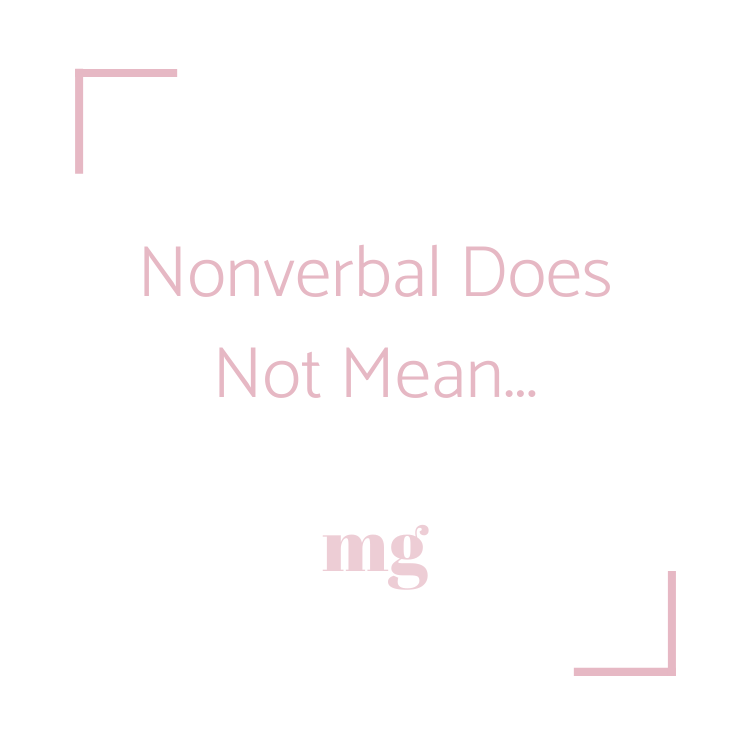Nonverbal Does Not Mean...
Nonverbal means exactly what it sounds like; it refers to a person who is “not verbal,” meaning he/she does not produce verbal speech. Over time, this term has slightly twisted from its original and literal meaning and has come to hold a lot of misconceptions. Today I want to tackle some of these misbeliefs by sharing 3 things that nonverbal does not mean…
Nonverbal does not mean “can’t understand” - Often times, people think that because a person cannot produce verbal speech, like say “Hello” or “How are you?” that he/she cannot understand language. There are two parts of language - expressive language and receptive language. Expressive language is what we produce and receptive language is what we understand. Sometimes people lump expressive and receptive language together and therefore assume that someone who is nonverbal is impaired in their receptive language in addition to their expressive language.
Nonverbal does not mean “silent” - People with autism sometimes may produce noises or other non-speech sounds as a way to self regulate and explore their environment. Self-stimulatory behavior, or stimming, specifically verbal stimming, is the repetition of sounds or words and is used as a response to over-stimulation. You may see someone exhibiting verbal stimming behaviors, even though that person is nonverbal.
Nonverbal does not mean “can’t communicate” - 93% of communication is nonverbal (body language, gestures, facial expression, etc.). Someone who is nonverbal is still able to communicate, but they do it in a different way. They may use American Sign Language, they may use an AAC device, they may use PECS (Picture Exchange Communication System) or they may use a completely different system. It’s a misconception to think that just because someone is nonverbal, they cannot communicate.
Nonverbal communication is most commonly associated with Autism Spectrum Disorder, but it can be present in other diagnoses, too. There are several programs that early childhood interventionists, psychologists and speech language pathologists use to increase communication in nonverbal children. Amongst the most popular are: Indirect Language Stimulation, DIR/Floortime, the Hanen program, the Early Start Denver Model, and the Autism Parent Training Program. If you have more questions about nonverbal communication, you can email me or visit asha.org!

